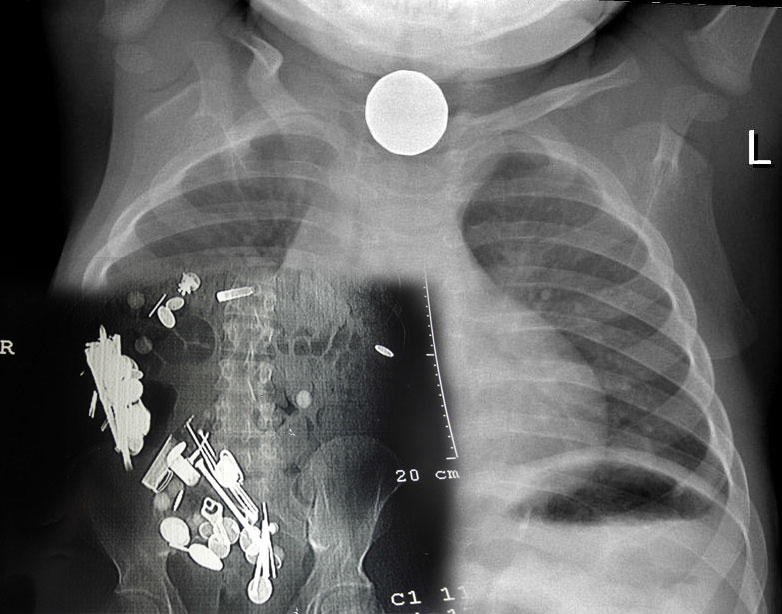About Foreign Body Removal From Esophegeal & Stomack

Foreign body ingestion is a common event that occurs most often in children who account for 75 to 85% of patients; and in psychiatric patients. In adults it is uncommon and usually happens accidentally where these bodies are ingested together with food. The most common foreign bodies accidentally ingested by adults are bones; especially fish bones 9-45% and less commonly dentures 4-18% whereas Children commonly ingest toys and small coins. Most of such foreign bodies pass through gastrointestinal tract uneventfully and rarely cause obstruction or perforation unless a context of pathological change of the digestive tract exists. These changes include strictures; malignancy; esophageal rings and achalasia. We hereby present an unusual and interesting case of a 51-year-old male patient in whom endoscopic removal from the stomach; of an endotracheal tube; was carried out.
Foreign body ingestion is a common event that occurs most often in children who account for 75 to 85% of patients; and in psychiatric patients. In adults it is uncommon and usually happens accidentally where these bodies are ingested together with food. The most common foreign bodies accidentally ingested by adults are bones; especially fish bones 9-45% and less commonly dentures 4-18% whereas Children commonly ingest toys and small coins.
What are the symptoms?
- Pain: Discomfort may range from mild to severe.
- Nasal drainage: If objects are inserted into the nose, nasal drainage may occur.
- Choking: If an object is stuck in the airway, it can cause choking and symptoms such as coughing and wheezing.
- Breathing problems: An object blocking an airway may cause difficulty breathing.
Foreign bodies that pass through the esophagus are mostly asymptomatic unless perforation or obstruction occurs. Perforation of the stomach or intestines manifests with symptoms and signs of peritonitis such as abdominal pain, guarding, and rebound tenderness. Obstruction of the intestine causes abdominal pain, distention, and/or vomiting.
A doctor diagnoses a foreign object in the body by talking with the individual or a family member and getting a history to determine what object was inserted and where. A physical exam will also be performed. In some instances, the doctor may be able to see the object. An X-ray can also be used to determine where a foreign object is in the body.

